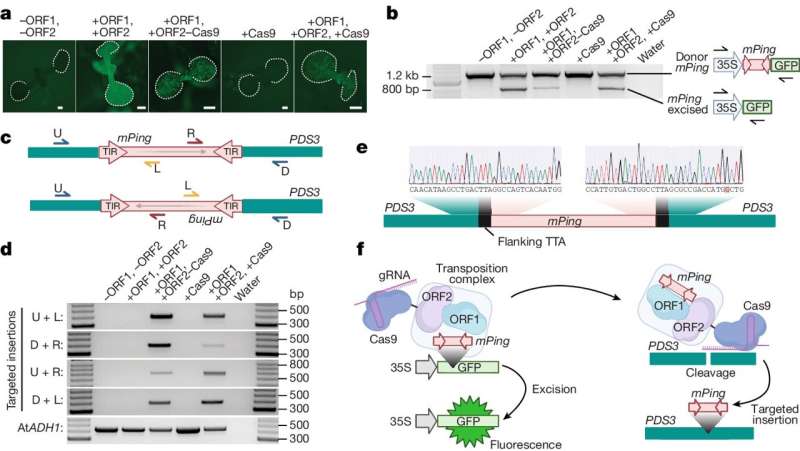This article has been reviewed according to Science X's editorial process and policies. Editors have highlighted the following attributes while ensuring the content's credibility:
fact-checked
peer-reviewed publication
trusted source
proofread
New tool enables faster, more cost-effective genome editing of traits to improve agriculture sustainability

With the goal of reducing the time and cost it takes to bring an improved crop to the marketplace to improve agriculture sustainability, research conducted in the laboratory of Keith Slotkin, Ph.D., and his colleagues in the Plant Transformation Facility at the Donald Danforth Plant Science Center, was recently published in the journal Nature. The publication "Transposase-assisted target site integration for efficient plant genome engineering" focuses on technology called TATSI (Transposase-Assisted Target Site Integration), which uses transposable elements to integrate custom DNA into specific sites in plant genomes.
The TATSI technology takes advantage of over two billion years of evolution of plant transposable elements, which naturally function as honed molecular machines to insert DNA into the genome. The high-frequency and high-precision target site integration of custom DNA into plant genomes enables the faster and less expensive production of gene-edited plants to address global challenges in agriculture, climate and the environment.
A critical bottleneck in modern crop improvement is the low frequency and error-prone integration of foreign DNA into the plant genome, hampering genome editing approaches for crop improvement. The CRISPR/Cas system functions like a pair of molecular "scissors" to cut the genome and introduce site-specific changes to the DNA. But current methods lack robust ways to add custom DNA accurately and efficiently at those edited sites.
TATSI technology takes advantage of the molecular "glue" feature of transposable elements to provide custom "cut-and-paste" genome editing when combined with CRISPR/Cas. The "scissors + glue" combination enables an order-of-magnitude increase in the rate of targeted DNA integration in plant genomes, allowing for custom improvement of plants through the addition of important traits such as virus resistance, elevated nutrient levels, or better oil composition.
The research on TATSI started in 2019 following the Danforth Center's "Conversations: Big Ideas 2.0" event, a competition in which a team from the Slotkin proposed harnessing the power of transposable elements for crop improvement. Often referred to as the "junk DNA," transposable elements comprise over 70% of corn genome.
Using the enzyme called "transposase" encoded by certain transposable elements, the big idea was a new genome editing tool that could enable development of a wide variety of new traits fast, better and cheaper. The Slotkin team won the competition and received seed money to initiate their research.
More information: Keith Slotkin, Transposase-assisted target-site integration for efficient plant genome engineering, Nature (2024). DOI: 10.1038/s41586-024-07613-8. www.nature.com/articles/s41586-024-07613-8
Journal information: Nature
Provided by Donald Danforth Plant Science Center





















